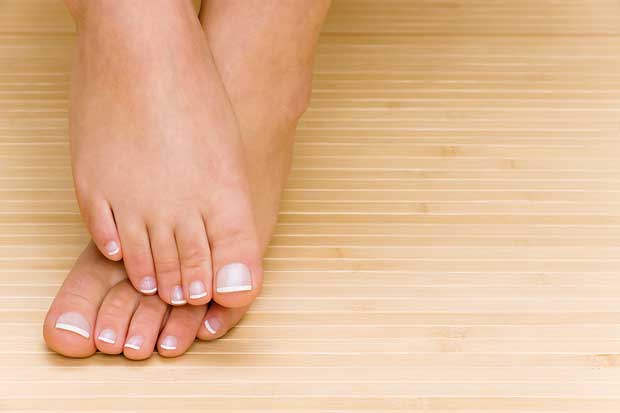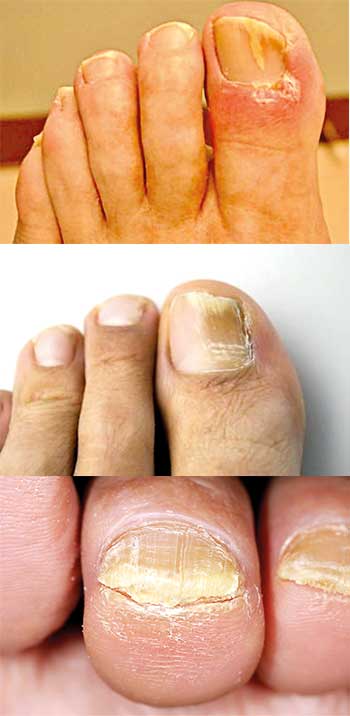Reply To:
Name - Reply Comment

 Also known as Onychomycosis or tinea unguium toenail fungi are defined as an overgrowth of fungi in the nails of the toes.
Also known as Onychomycosis or tinea unguium toenail fungi are defined as an overgrowth of fungi in the nails of the toes.
This occurs as a result of an infection entering through cracks in your nails or splits on your foot skin. Although, fungal infections can affect the finger nails as well, toenails are at a higher risk due to frequent contamination with possible fungal organisms and retention of moisture in between toes.
The disease can be clinically identified easily as the nail would become discoloured, thickened and distorted.

What are the causes?
The fungi are usually harmless to the skin even though various favorable conditions mentioned below may lead to invasion of different types of fungi, resulting in infections.
Fungi grow easily in warm, dark and moist places like feet whereas the growth will get enhanced due to following reasons,
Moreover, a higher risk of toenail fungus can be seen in

Major signs and symptoms
observed in patients with toenail fungi include, discoloration of the nails where they may become white, yellow or black, notable changes in the shape of nails, thickening of nails, unusual odor, easy breaking of nails or parts, pain when a pressure is applied, tenderness and signs of inflammation on the skin around the nails with itchiness, cracks, reddening and swelling.
Diagnosis - A complete history from the patient about the changes of the nails, skin around the area, habits of washing hands, feet often and positive family history is important whereas a thorough physical examination should also be carried out in order to get an idea about the diagnosis.
Treatment- If the patient is having a severe pain,
BUT, in severe cases complete removal of the nail is recommended.
Furthermore, latest treatments like laser treatment where a laser is used to terminate the fungi can also be considered as an option.
How to prevent yourself